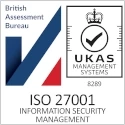15
+
YEARS OF
EXPERIENCE
1000
+
SUCCESSFUL
Projects
80
+
Satisfied
Clients

In the ever-evolving landscape of cyber threats, robust Security Management has become an essential component of modern IT infrastructure. As businesses increasingly rely on digital technologies to drive growth and streamline operations, the risk of security breaches, data theft, and cyberattacks also grows. A Security Management system ensures that an organization’s data, network, applications, and systems remain protected from potential threats, while maintaining business continuity and compliance with industry regulations.
What is Security Management?
Security Management refers to the process of overseeing and implementing strategies to protect an organization’s IT infrastructure from internal and external security threats. It encompasses a broad range of activities, including risk assessment, threat detection, incident response, vulnerability management, compliance monitoring, and the overall safeguarding of sensitive data and critical systems.
Security management involves integrating various security tools and protocols to create a multi-layered defense system that prevents, detects, and responds to potential cyber threats. These tools can include firewalls, intrusion detection systems (IDS), antivirus software, encryption technologies, access control systems, and security information and event management (SIEM) solutions. Effective security management also ensures that security policies and procedures are continuously updated to address emerging threats, regulatory changes, and evolving business needs.
By outsourcing security management to a Managed Security Service Provider, businesses gain access to a team of professionals who are skilled in the latest security technologies and threat mitigation techniques, allowing organizations to focus on their core objectives while leaving the complexities of security to the experts.





Why Security Management is Crucial for Businesses
With the increasing frequency and sophistication of cyberattacks, organizations of all sizes face significant risks. Data breaches, ransomware, phishing attacks, and insider threats can have devastating financial, operational, and reputational consequences. The cost of a security breach extends far beyond the immediate financial impact of lost data or disrupted services—it can also result in a loss of customer trust, legal liabilities, regulatory fines, and a damaged brand reputation.
Security Management ensures that businesses are prepared to defend against these attacks by implementing a proactive, multi-layered approach to security. The key objective is not just to respond to incidents after they occur but to prevent them from happening in the first place. This proactive approach to security involves continuous monitoring, threat intelligence, vulnerability assessments, and regular security audits to identify and address risks before they can be exploited by cybercriminals.
Moreover, security management is increasingly intertwined with compliance. Many industries—such as healthcare, finance, and retail—are subject to strict data protection regulations like GDPR, HIPAA, and PCI-DSS. Non-compliance can result in hefty fines and penalties. A robust security management strategy helps organizations meet these regulatory requirements by enforcing appropriate security controls, monitoring compliance in real time, and providing the necessary reporting to demonstrate adherence to legal standards.
Infrastructure Management
Comprehensive infrastructure management services to optimize performance, enhance security, and ensure business continuity across your systems.Managed Network
Proactive managed network services to maintain optimal performance, secure connectivity, and minimize downtime for your business.Server Management
Reliable server management services to ensure uptime, security, and performance for your business-critical applications and data.
Key Components of Effective Security Management
A comprehensive Security Management strategy is built upon several foundational components, each designed to protect different aspects of an organization’s IT infrastructure.
One of the most critical elements is risk management. Security management begins with identifying potential risks—whether they arise from external threats, such as hackers or malware, or internal vulnerabilities, such as human error or outdated systems. By conducting a thorough risk assessment, businesses can prioritize their security investments and focus on the areas that pose the highest threat.
Once risks are identified, organizations must implement appropriate controls to mitigate these threats. This includes configuring firewalls, deploying intrusion detection systems, establishing data encryption protocols, and setting up access control measures to limit exposure to sensitive information.
Another crucial aspect of security management is incident response. Despite best efforts to prevent breaches, no system is 100% foolproof. Therefore, a well-structured incident response plan is necessary to quickly detect, contain, and mitigate any potential security incident. This plan should define the roles and responsibilities of the security team, establish a chain of communication, and outline clear steps for investigating and addressing security breaches.
Continuous monitoring is also essential in security management. This includes real-time surveillance of networks, systems, and applications to detect unusual behavior or potential threats. With tools like Security Information and Event Management (SIEM), security teams can aggregate data from multiple sources to identify patterns, anomalies, and suspicious activities that may indicate a security threat.
Lastly, an effective security management plan incorporates training and awareness for employees. Since human error is one of the leading causes of security breaches, it’s essential that staff members are educated about security best practices, such as identifying phishing emails, using strong passwords, and following secure data handling protocols.
Conclusion
Security Management is more critical than ever in today’s interconnected world. With cyber threats becoming increasingly sophisticated, businesses must take proactive steps to protect their data, networks, and systems. By partnering with a Managed Security Service Provider, organizations can leverage expert security knowledge, advanced tools, and continuous monitoring to safeguard their IT infrastructure and mitigate potential risks.
The benefits of Managed Security Management—from cost efficiency and scalability to improved security posture and compliance—make it an essential component of modern business operations. As cyber threats continue to evolve, businesses that invest in a robust security management strategy will be better equipped to defend against attacks, maintain business continuity, and protect their brand reputation.
In conclusion, effective Security Management ensures that businesses can not only detect and respond to threats but also prevent them from occurring in the first place. By implementing a proactive, multi-layered approach to security, organizations can safeguard their assets, ensure compliance, and focus on driving growth in a secure digital environment.

answer time
satisfaction
score
on initial call
same business
day









